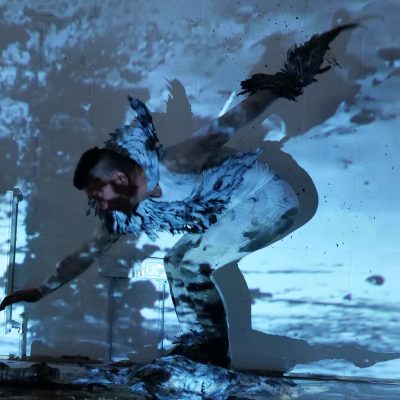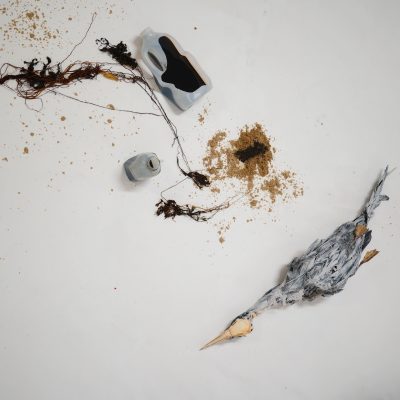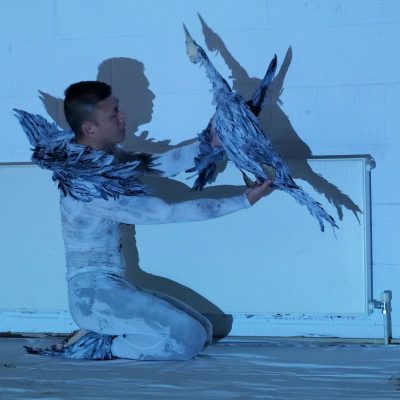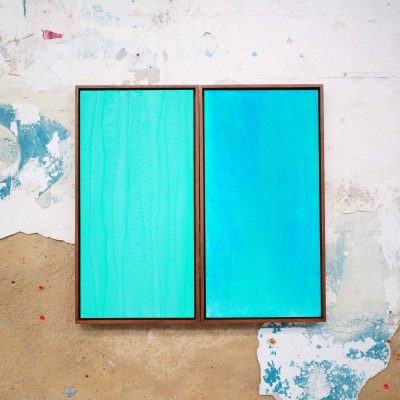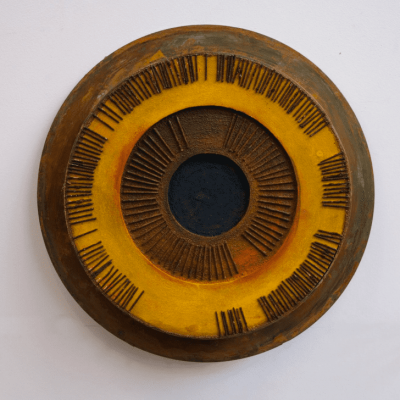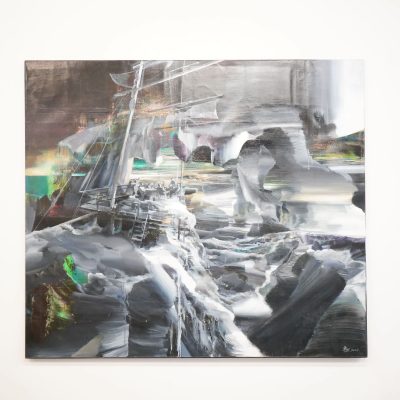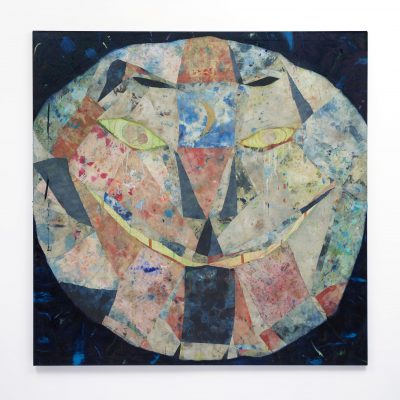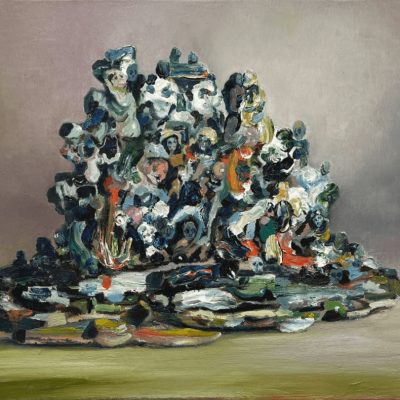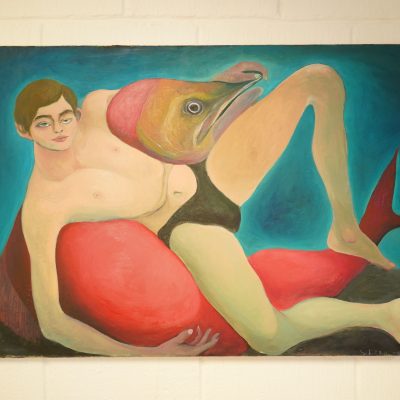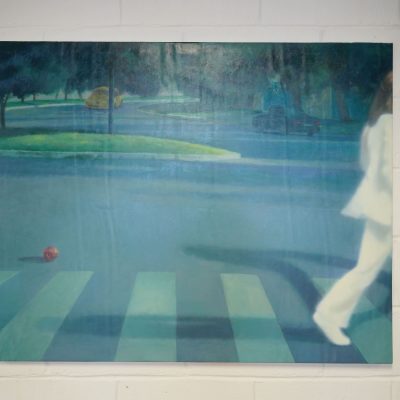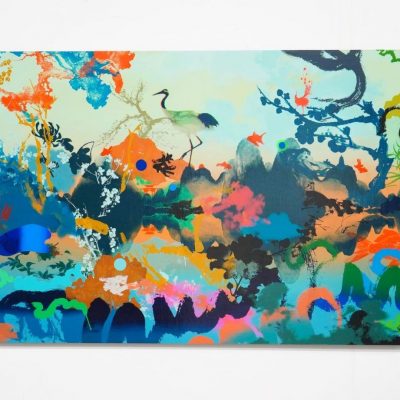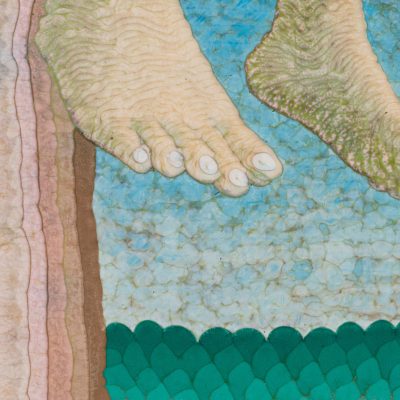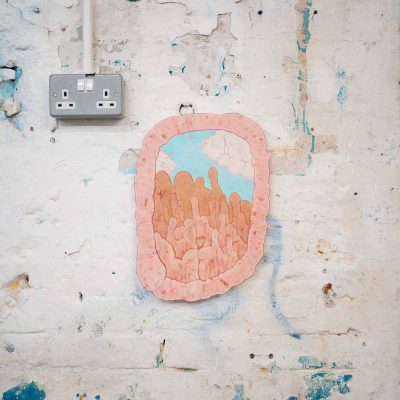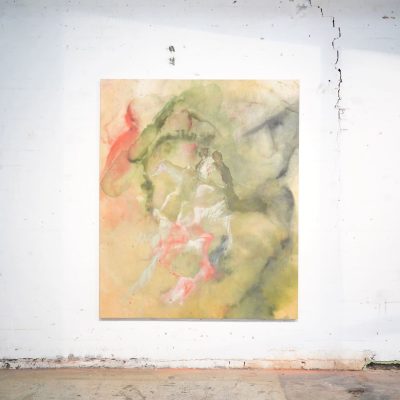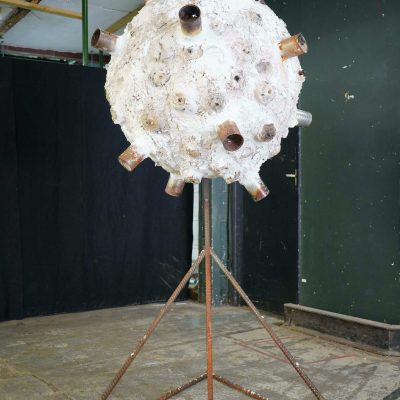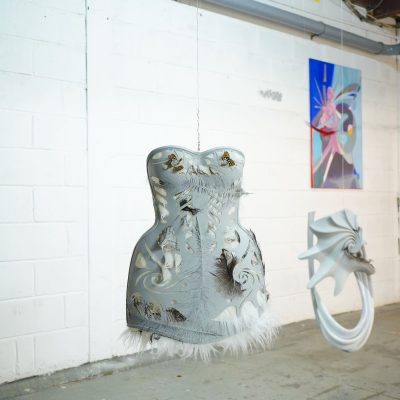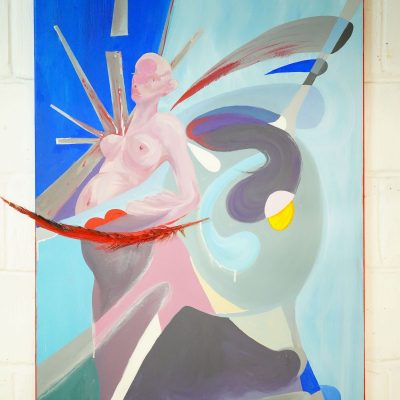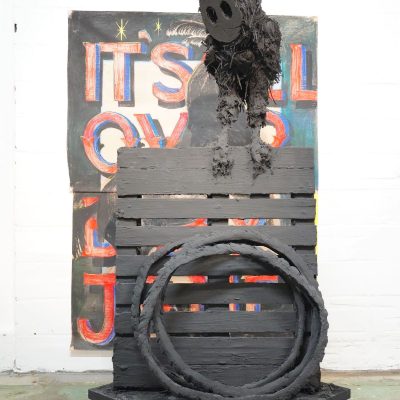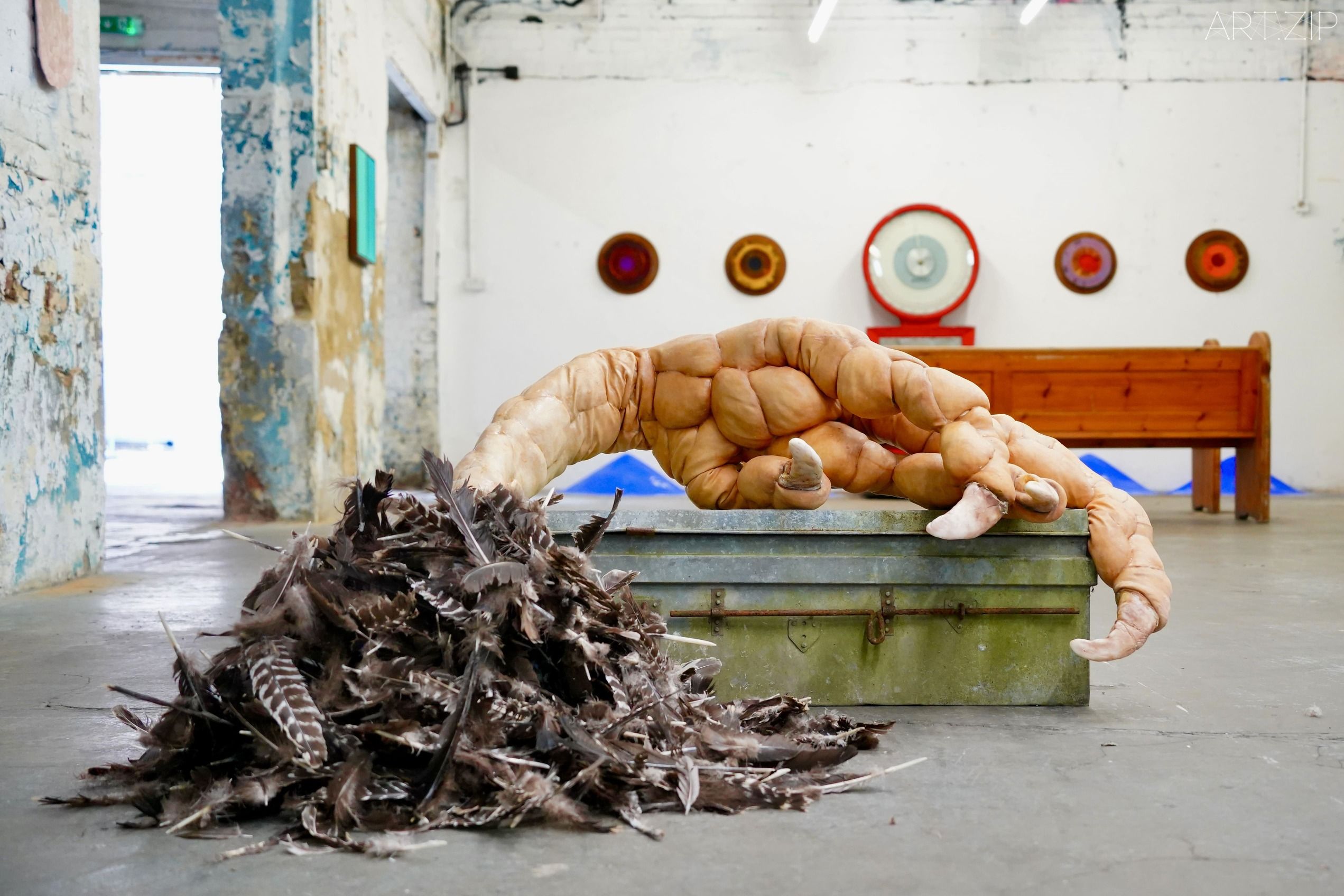
7th – 9th October, 2023
Ugly Duck
Frieze week is as popular as ever, drawing art enthusiasts and collectors from around the world. During this vibrant week, we’re excited to see a dynamic and highly talented team of young curators, Tiderip and their exhibition “The Brink”. The team is making their mark on the art scene, bringing fresh perspectives and innovative ideas to the forefront of the contemporary art world.
Tiderip, an experimental international curatorial collective, founded in Shanghai / London in 2021.The co-founders are emerging curators and artists graduated from the Royal College of Art (RCA) and University College London (UCL). Dedicating to interdisciplinary innovation, Tiderip seeks a new model of curation future. The crest of the wave represents our gathering and convergence, and in the darkness there lies our strength, fluidity and diversity.
“The Brink” is an expansive exhibition featuring the creative endeavors of 21 artists, comprising both established figures and emerging talents. Their artistic expressions span the spectrum, encompassing sculpture, installations, paintings, and performance art, all thoughtfully curated within the confines of a once-dilapidated tannery.
This exhibition represents a collaborative endeavor, jointly conceived by artists Anna Blom, Jo Dennis, and curators Marjorier Ding, Elena Shkvarkina, and Linlin Zhu. Together, they have drawn artists from diverse disciplines, uniting them in an exploration of the psychological, physical, and imaginative aspects of a space. The stripped-back setting serves as a unique canvas for their creative investigations, delving into the concept of “place” and its counterpart, “non-place.”
Such sites often fall within the category of liminal spaces, residing in-between the realms of the public and the private, the constructed and the natural. This inherent liminality instills a sense of disorientation and alienation, which serves as a springboard for an examination of the intricate and, at times, paradoxical ways we perceive and interact with space. It invites contemplation of how personal and collective memories, as well as culture, shape our understanding of a place.
The artworks on display navigate a broad array of themes, including temporality, mortality, the symbiotic relationship between individuals and their environments, and the dynamic interplay between memory, history, and mythology in shaping the essence of a place.
Featuring specially commissioned artworks tailored for the occasion, “The Brink” transforms the Ugly Duck exhibition space, encompassing both the ground floor and the garage. This multifaceted exhibition showcases the talents of a diverse group of artists including Abigail Norris, Alex Young, Anna Blom, Elena Shkvarkina, Ge Hui, Ivan Seal, Jo Dennis, Katrin Spranger, Nicola Hicks MBE, Pía Ortuño, Ross Taylor, Tom Woolner, Xu Haoyang, Zhang Guangyu, and ZITA. A special guest, KV Duong, will be performing Katrin Spranger’s thought-provoking environmental statement, “Spillage,” in collaboration with costume designer ZITA.
Complementing the exhibition is a special screening program curated by Linlin Zhu. This program offers a unique insight into a range of mid and short films, including documentaries directed by Pietro Francesco Pingitore and Siyi Gu, experimental shorts by Laura Puig and Chengzhou, and animations by Elmano Diogo.
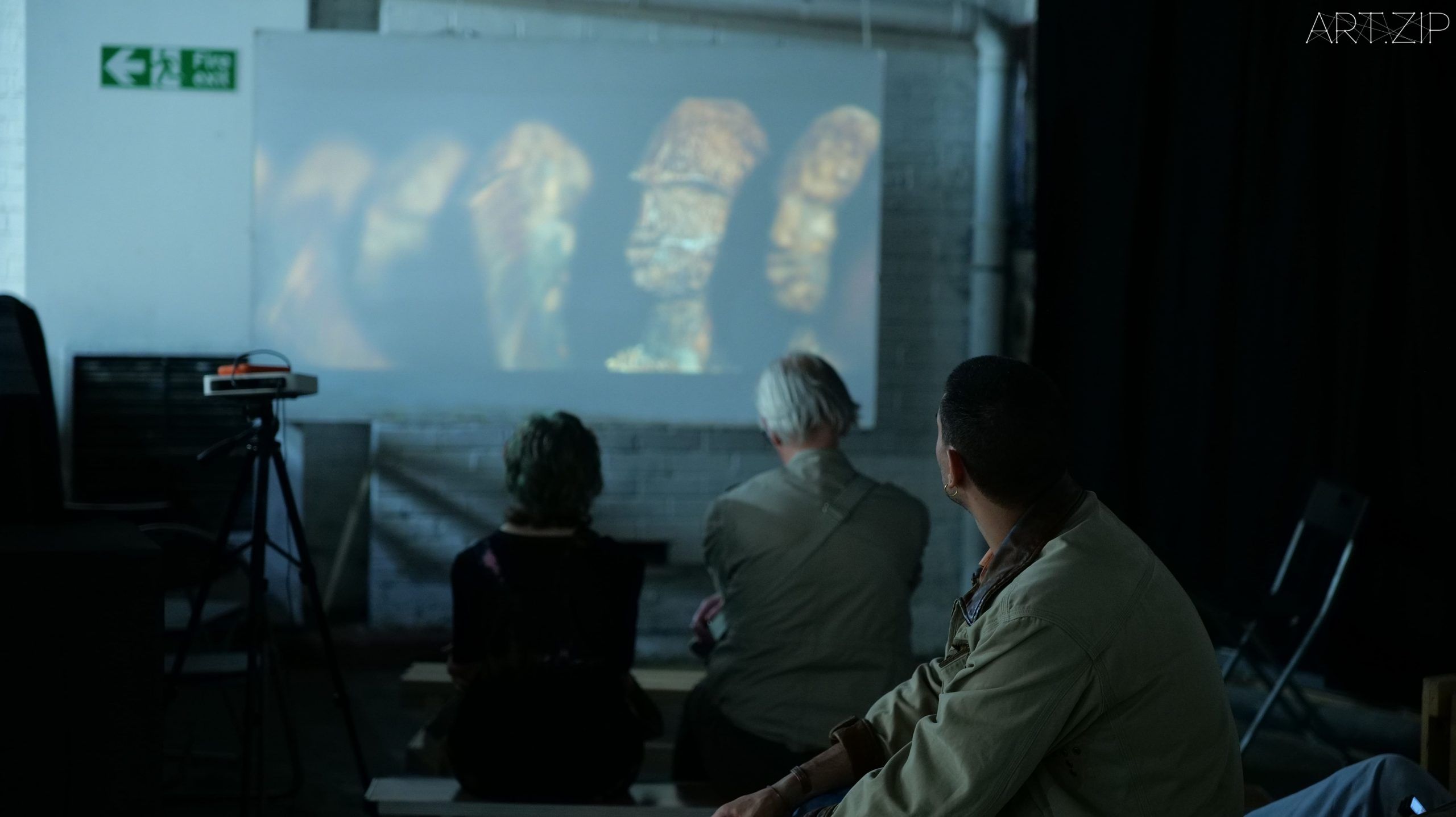
Frieze弗里茲藝術周無疑是個極具吸引力的藝術盛事,集結了來自世界各地的藝術愛好者和藏家。在這充滿活力和期待的一週,我們很高興遇見一支年輕且富有才華的策展團隊——Tiderip,他們正為當代藝術界帶來創新角度與思維。
2023年10月7日至9日,Tiderip聯手21位國際藝術家,在Ugly Duck展覽空間推出一場主題為“新廢墟與新靈魂——The Brink/塵埃之盡”的大型群展。此次展覽匯聚了一群充滿活力的藝術家,他們包括已成名的藝術家和新晉藝術家,其中不乏榮獲英國女王傑出勳章的藝術家、英國皇家藝術學院的導師、中國私人美術館的創辦人以及國家地理頻道的制片人等。同時,也有畢業於英國皇家藝術學院和倫敦大學學院等頂尖藝術院校的新銳藝術家。這個多元的陣容將透過雕塑、裝置藝術、繪畫、表演和電影等多種藝術形式,共同在曾經荒廢的制革廠空間中展示他們的最新創作。
展覽的主題“新廢墟與新靈魂”旨在深入探究空間在心理、物理和想象三個層面上的複雜性。該展覽通過利用一個反傳統白盒子式的「展覽」場所來重新探索「地方」及「非地方(指不和任何人產生情感聯繫的暫時性場所)」的概念。這樣的場所通常是被人們所邊緣化的。它們既不完全是公共的,也不完全是私人的,既不完全是建築的,也不完全是自然的。這種邊緣性創造了一種之於個體的迷失感和疏離感,同時也是本次展覽的出發點——探索群體用於強化空間體驗複雜且相異的方式,以及思考「地方」如何受到個人和集體記憶以及文化的塑造方式的影響。這些作品將挖掘臨時性、有限性以及個體與他們所居住的空間之間的關係,以及「地方」如何受到記憶、歷史和精神的影響而塑造形成。
此次展覽是由藝術家Anna Blom、Jo Dennis,以及策展人Marjorier Ding(丁琪)、Elena Shkvarkina和Linlin Zhu(朱琳琳)聯合發起。展覽上呈現了一群多元化的藝術家,其中包括Abigail Norris、Alex Young、Anna Blom、Elena Shkvarkina、Ge Hui、Ivan Seal、Jo Dennis、Katrin Spranger、Nicola Hicks MBE、Pía Ortuño、Ross Taylor、Tom Woolner、Xu Haoyang、Zhang Guangyu和ZITA等。特別嘉賓KV Duong將進行一場由Katrin Spranger創作的環保主題表演《Spillage》,並將與服裝設計師ZITA合作呈現。
主展區之外,展覽特別開設了由Linlin Zhu(朱琳琳)所策劃的影像放映單元。5位來自不同國家的電影人將帶來一系列短片作品,包括Pietro Francesco Pingitore和顧思懿執導的紀錄片、Laura Puig和周承舟創作的實驗短片,以及Elmano Diogo製作的動畫短片。
從廢墟概念下的新世界出發,影片將討論感知生命的方式、生命與藝術的關係以及建立新秩序的可能性。兩部紀錄片將分別從通過藝術療癒和捕捉人工生態系統中被遏制的動物生態入手。兩部實驗短片將人的身體或自我意識融入樹木、金魚和材料等不同媒介中,以探索人的身體和精神的生存狀態。而動畫片則更加直觀,將帶領觀眾尋找治癒心靈創傷的方法。通過影像,Tiderip希望找到一種溫和而獨特的方式,幫助生命在廢墟中實現和平,讓異化的靈魂回歸正常狀態。

